Trip Logs
Kimberley Cruise: Australia’s Last Frontier Trip Log: May 6-18, 2022

May 7, 2022 | Broome, Australia
We all converged on the far-away outpost of Broome from the distant reaches of the planet for the same reason: to embark on an expedition to experience the culture, wildlife and landscapes of Australia’s Kimberley region. A roadless coastline of red sandstone, waterfalls, and mangrove swamps, the Kimberley is one of the most remote parts of Australia, and home to some of the most extreme tidal variation on the planet.
Some of us arrived a few days early to enjoy Broome and the incredible 14-mile-long stretch of sand known as Cable Beach. When the tide receded, a huge area of beach was out of the water, as well as some rocky outcrops that provided ample opportunities for tide-pooling. Crabs, brittle stars and even octopi were a few of the low tide residents we encountered there.
The hotel grounds were gorgeous, and a very relaxing place to help remedy our jet lag. Several species of ibis roamed the grassy lawns during the day and were replaced by wallabies once the sun went down. This evening, we met the Expedition Team at a welcome cocktail party overlooking the sea. Under an orange sky, and with spectacular swarms of red dragonflies swirling above us, we sipped ginger beer from a local brewery and celebrated the adventure we were about to embark on together.

May 8, 2022 | Broome
We awoke to a spectacular morning chorus of birdsong as the sky brightened. Following a delicious breakfast, some of us headed out to the Broome Bird Observatory for an introduction to the birds of the region. The shorelines around Broome are of international importance for the millions of migratory waders or shorebirds that use it on their seasonal migration from their breeding grounds in the Arctic. We sipped tea while watching double-barred finches making the most of the birdbaths near the main buildings, and walked out to an overlook where gull-billed terns loafed on a sandbar and great egrets foraged along the rocky shoreline.
Others of us set off to visit the Japanese cemetery, which pays tribute to the many Japanese migrant workers who lost their lives during Broome’s pearling boom. Harvesting the pearls was extremely dangerous work, and many sailors and divers died as a result. We also visited an exhibit to learn how the world-famous South Sea Australian pearl is cultivated and harvested.
Some of us spent time with Expedition Staff member Bart Pigram, who provided firsthand insight into the landscape of northwestern Australia, and the local Yawuru people’s place within it. He introduced us to the language and cultural heritage of the area, and really set the stage for our understanding of Aboriginal heritage.
Late in the afternoon, we arrived at the dock and were warmly greeted aboard ‘Le Laperouse’ by the ship’s crew. We got ourselves settled on board before gathering in The Theater, where Cruise Director Nadia Eckhardt gave us an overview of the ship. Expedition Leader Brad Climpson followed with an introduction to the expedition team, whose knowledge and passion for this fascinating part of the world would really bring the Kimberley and its magic to life. Following a relaxing dinner on our new home-away-from-home, some of us gathered in the Main Lounge for a cocktail and some tunes with performers Fran and Gus, while others headed off to bed for a good night’s sleep in anticipation of our arrival tomorrow in the Lacepede Islands.

May 9, 2022 | Lacepede Islands
The sky brightened to an intense orange at sunrise this morning, and we took it all in out on deck with a cup of coffee in hand. After a hearty breakfast, we joined Expedition Leader Brad Climpson in The Theater for a run through of Zodiac operations on ‘Le Lapérouse,’ as well as a briefing on our activities for tomorrow. Bart Pigram followed with his presentation "Broome's Aboriginal Culture, Language and Links to The Dampier Peninsula."
Once all the boats had been lowered and we had all fueled up over lunch, we set out to explore a low-lying cluster of islands called the Lacepedes, ushered in by flock after flock of brown boobies. Several Australian white pelicans fished in the shallows, scooping up small fish into their large throat pouches before swallowing them whole. Young silver gulls chirped for regurgitated food from their parents along the shoreline, while small groups of pied cormorants stood around watching it all unfold. But the stars of the show were certainly the brown boobies, which were literally everywhere. These large birds feed on fish and squid by diving into the water from above; however, this group was here in the Lacepedes looking for mates. An estimated 18,000 pairs nest in this island group, accounting for 1% of the entire world population.
The stunning white-sand beaches of the Lacepedes are also used by female green sea turtles for nesting, and in fact is one of the most important nesting sites in all Western Australia. Learning this did not surprise most of us, as green turtles were all around, scraping algae off rocky substrates and popping up constantly for a breath of air, often right next to the Zodiac. We likewise watched in awe as lesser frigatebirds soared overhead, barely moving their wings at all yet still going exactly where they wanted to go. These huge birds actually weigh very little, and their bones make up only 5% of their body weight.
The Lacepede Islands were a magical place to visit, and we felt fortunate to have had the opportunity to visit this remote and wild place. Back on the ship, we watched a spectacular sunset out on deck during Captain Ludovic Provost's Welcome Aboard Cocktail Party, where we mingled over Champagne and were introduced to some of the ship’s officers. This was followed by a festive dinner and some dancing in the bar, as the ship made its way towards Talbot Bay in the heart of the Kimberley.

May 10, 2022 | Talbot Bay, Cyclone Creek and Horizontal Falls
In early morning light, Captain Ludovic Provost maneuvered ‘Le Lapérouse’ through the narrows and into Talbot Bay. It was a stunning way to wake up, with spectacular orange sandstone bluffs beginning to illuminate in the day's first light. After breakfast, we headed out to get our first look at Horizontal Falls, actually a fast-moving tidal flow through two narrow, closely aligned gorges of the McLarty Range. The direction of the flow reverses with each change of tide. Our first stop found it at slack tide, with almost no water movement, which would be quite the comparison when we returned later in the day to see it flowing like a river.
We cruised up Cyclone Creek, with its beautiful gorge, where we caught glimpses of white-quilled rock-pigeons flying from one rocky ledge to another. Some of us spotted short-eared rock-wallabies resting on a ledge. Once through the gorge, the river opened up and we meandered among the submerged mangroves, where needlefish patrolled the shallows for something to eat. The highlight of our exploration had to be the geology. The magnificent sandstone bluffs had been contorted by tectonic forces, resulting in a tilting and bending of the rock layers. There were long ridges, outcroppings with zigzagging layers, and even flute-like spires perched precariously over the sea. It was a sight to behold, and different patterns revealed themselves around every turn.
After sharing stories back on board over lunch, and with spectacular scenery all around us, we set out again in the Zodiacs to explore the area. We spotted a striated heron in a sheltered cove, as well as flocks of honeyeaters visiting the flowering trees on the hillside. We also returned for one more pass through Horizontal Falls, this time with the water flowing the opposite direction.
Back on the ship, we mingled over afternoon tea before joining Geologist Jason Hicks in The Theater for his presentation "Breaking Plates to Form a Continent: The Geological Origin of Australia." We then gathered on the outer decks to watch the ship pass back through the narrows and out of beautiful Talbot Bay. At our first evening Recap of the trip, Rich Pagen prepared us to be on the lookout for the fabled "green flash," and Shirley Campbell explained the early migration of humans as it related to the Aboriginal people of Australia. It was an incredible and diverse first day in the Kimberley.

May 11, 2022 | Freshwater Cove and Langgi
We sipped coffee in the early morning light as the Expedition Staff lowered the fleet of Zodiacs in preparation for taking us ashore at Freshwater Cove, an aptly named beach with a perennial stream flowing out on the edge of the beach. Beautiful small fish with orange fins meandered through the larger pools of the stream, and fresh wallaby tracks in the sand nearby confirmed the importance of this water source for the area's wildlife.
Once ashore, we were welcomed by the traditional owners of the land, who painted ochre on our cheeks before leading us up to a rock art gallery in a cave well inland. As we climbed higher the terrain became rockier, and soon we arrived at a high point, with a shady overhang beneath it, which housed the rock art. Our host Neil, one of the traditional owners of the land, pointed out some of the Wadjina art painted on the cave's ceiling — some of the paintings date back 4,000 years — and explained its significance. The walk back down to the beach rewarded us with spectacular views of the sea down below us. Once down, we participated in a smoke ceremony to keep evil spirits away, before wandering the beach in search of animal tracks and signs of life washed up on the beach.
Over lunch, ‘Le Lapérouse’ made her way north along the rocky coastline, before arriving off a small inlet known as Langgi. There we went ashore at low tide, during which a large, exposed swath of sand was ours to explore. Fresh quoll tracks were everywhere at the top of the beach, while fiddler crabs actively went about their business in the mud near some low mangroves. Through a spotting scope, we watched the male crabs (with their one large claw and one small one) wave their big claw to both attract females and deter other males. But the highlight of the landing was most certainly the storytelling by the traditional owners, as well as the magnificent rock pinnacles that lined the inlet.
Back on board, we joined Mark Edward Harris for his presentation "The Travel Photo Essay: Describing a Journey Through Images." Mark shared many of the techniques he regularly employs to capture the emotions of a particular scene. We then grabbed a cocktail and headed out on deck to watch yet another magical sunset, before joining the Expedition Staff for an informative Recap and Briefing.

May 12, 2022 | Hunter River and Mitchell Falls
We watched the sunrise from our anchorage just off the mouth of the Hunter River. The water was a brilliant turquoise in all directions, and the glorious white sand beaches of Naturalist Island lay just off the beam of the ship. After a leisurely breakfast, we prepared ourselves for what would prove to be an amazing day.
Some of us began our day by taking a helicopter flight from Naturalist Island 37 miles inland to an impressive four-step waterfall called Mitchell Falls. The scenery along the way was incredible, and we gained such a different perspective of the Kimberley landscape from 600 feet up. After several passes just over the falls, the helicopter landed on a wide rock platform, and we set out to explore the area on foot. Some of us hiked out to an overlook over the falls, while several groups of Torresian crows flew overhead. Others set out to have a bit of a swim in the rocky pools along the river. Being spring-fed, the water was brisk and just the right temperature for a hot sunny day such as this.
Back on the ship, we had the opportunity to set out by Zodiac to explore the Hunter River and its mangrove-lined tributaries. We stopped at the water’s edge, where dozens of fiddler crabs were busy sifting through the sediment for organic material. Some of us also came across mudskippers, a type of goby that is most active when the tide is out and the water gone. Of course, the highlight was coming across saltwater crocodiles (called “salties” in Australia), either loafing on the shoreline or patrolling the river with their eyes and snout the only body parts visible above the water. The largest reptiles on our planet, saltwater crocodiles are an apex predator with a bite that ranks as the most powerful of any animal, exerting as much as 4,000 pounds of pressure.
When the tide was higher and flooded the forest, we were able to meander among the trees themselves by heading into some of the narrow channels. Even in the heat of the day, birdsong was prevalent, including that of the white-throated whistler, a mangrove specialist. Some of us also spotted archerfish, a hunter of insects which it attempts to knock off the branches above the surface by squirting water out of its mouth high into the air!
After returning to the ship, we joined Brad Climpson for a briefing about tomorrow's activities before heading out on deck for sunset cocktails. The setting here in Prince Frederick Harbor was stunning. It was a perfect end to our day of exploring the heart of the Kimberley.

May 13, 2022 | Bigge Island and Long Reef
After watching yet another stunning sunrise, we relaxed over breakfast before zipping ashore by Zodiac to a beautiful small beach on Bigge Island. Above the high tide line, we found numerous body pits left by nesting sea turtles. Many were ringed with the tracks of northern quolls, nocturnal marsupial carnivores that would like nothing more than the opportunity to snack on newly hatched sea turtles.
Shells, sea fans and sponges were just a few of the fascinating objects we encountered when we fanned out to explore the beach. Cone shells and fragments of coral littered the area, while bar-shouldered doves called from the nearby trees. From the beach, we climbed up on the King Leopold Sandstone itself, arriving at a natural viewpoint that looked over the surrounding ridges. We then explored the overhangs and caves along the beach to admire the numerous Wandjina rock art paintings found there. Shirley Campbell and Bart Pigram interpreted the site for us, giving us an appreciation and understanding of its cultural importance.
Back on the ship, we joined Rich Pagen in The Theater for a briefing about our snorkel activities tomorrow at Ashmore Reef. Over lunch, the ship repositioned in the vicinity of Long Reef, where we set off for a Zodiac cruise of the area.
Planning around the massive tides found in this area, Expedition Leader Brad Climpson timed it perfectly. We were out in Zodiacs, surround by sea in all directions, when all of a sudden, the reef began to emerge right next to us. We admired the water cascading off the reef in front of us, while blacktip reef sharks made curious passes next to our Zodiac. Occasional sea turtles surfaced nearby, as birds began to fly in to feed on the riches of the exposed rock. Reef egrets searched for exposed prey, while flocks of terns hovered above the deeper water right next to the reef, in search of fish stunned by the outflow of water off the reef. It was a sight to behold, and yet another unique Kimberley experience.
Back on ‘Le Laperouse,’ we gathered for Recap and Briefing, during which Rich Pagen shared stories of ant lions and cuttlefish. This was followed by a delicious dinner, and then several lively rounds of trivia in the Lounge.

May 14, 2022 | Ashmore Reef and at sea
A glorious white sun climbed high up above the glassy sea and the wind was virtually nonexistent, making it very easy to see flying fish as they took to the air, fleeing our approaching ship. After a delicious breakfast, we donned our snorkel attire and boarded Zodiacs to explore the islands and lagoons of Ashmore Reef. In calm conditions, we made the run over to West Island, home to a large and diverse seabird breeding colony.
A number of nautilus shells littered the beach, in between groups of brown noddies that were roosting together in a tight cluster just above the waterline. A tiger shark patrolled the shallows, undoubtedly waiting for one of the thousands of brown boobies in the area to take a rest on the water. A circling kettle of lesser frigatebirds soared overhead, slowly rising to great heights before each peeled off and headed out to sea in search of food.
We then headed over to the snorkel site, a coral garden consisting of a reef flat, as well as a drop off to a sandy bottom. Blue chromis schooled above prominent coral heads while dot-dash goatfish explored the sandy bottom with their chemo-sensitive chin barbels, often with a wrasse or two shadowing them in case an easy meal should flush from the protection of the sediment. It was a spectacular sight, where whitetip reef sharks made passes in gullies between the coral, and parrotfish of a number of species grazed algae off of the rock.
Back on the ship, we gathered for lunch out on deck under brilliant blue skies. The wind remained nearly nonexistent, and we leaned over the railing scanning for dolphins and other wildlife as the Captain pointed the ship back in the direction of the Kimberley. Patches of sargassum seaweed passed down the side of the ship, sometimes with an entourage of fish beneath, taking refuge there from the blue water of the pelagic zone.
During the afternoon, we met Bart Pigram in The Theater for his presentation "Line by Line: A Deeper Look into the Lyrics of the Pigram Brothers." It was a fascinating look at the meaning behind some of the songs we'd seen his father's band perform way back in Broome at the start of the trip. This was followed by Jason Hicks’ presentation "Climate Change: Where We Are, How We Got Here, and Where We Are Going." Jason took us through the research and models predicting temperature change and sea level rise globally and explained some of the consequences of these changes.
In the evening, we gathered for Recap in The Theater, followed by yet another impressive sunset (this one with a green flash!) out on deck. After dinner, many of us joined Olga for a stunning classical piano concert, before heading off for a restful night's sleep.

May 15, 2022 | King George River and Koolama Bay
Beautiful calm seas and a glorious sunrise greeted us as we pulled back the curtains on yet another stunning day in the Kimberley. With a morning at sea, we had plenty of time to relax out on deck, catch up on photos, or visit the gym for a little exercise. After breakfast, Shirley Campbell presented her talk "We Fought Back: Aboriginal Resistance and Activism." We then mingled in the lounge over cups of tea or lined the railings out on deck scanning for wildlife. Rich Pagen gathered us back in The Theater for his presentation, "The Tropical Marine Ecological Fringe: A Transect from the Coast to the Blue Water," a talk wherein mudskippers and fiddler crabs were given well-deserved attention.
Over lunch, ‘Le Laperouse’ arrived at the mouth of the King George River, in a body of water known as Koolama Bay. Large sandbars marked the entrance to the river, and soon we found ourselves in Zodiacs cruising up into the river itself. Over the course of many thousands of years, the river has cut a long steep gorge through beautiful orange sandstone rock. Within no time, we were in the middle of it all, with towering cliffs reaching up for the sky on both sides of us.
A massive white-bellied sea eagle nest was perched high on rocky ledge above the water, and ospreys patrolled the cliffs in search of fish in the river below. We admired the prop roots and propagules of the abundant mangrove trees, and a few of us even came across a flatback sea turtle sticking its nose up above the surface every few minutes for a breath.
Soon we arrived at two spectacular waterfalls, called the Twin Falls, all the way at the end of a shaded box canyon. Evidence on the rock revealed the extent of flow that would be present during the rainy season. This time of year, it was a comparably quiet and peaceful place, and we pulled right up to the falls for a closer look. Some of us partook in what can best be described as a proper drenching, pulling up under the falls in a Zodiac for a good cooling soak in the water and spray cascading down from the plateau above.
Back on the ship, we rinsed off for Recap, during which Rich Pagen spoke of the dance of the mistletoe bird and Mike Murphy discussed the importance of “looking good.” After a delicious dinner, some of us went up on the top deck to do some stargazing. Soon we were all off to bed, excited for our day of exploration tomorrow out of the tiny town of Wyndam.
May 16, 2022 | Ord River and the Bungle Bungles
We stepped out on deck with a cup of coffee to watch as the ship made her way through Cambridge Gulf under a brightening sky, en route to the small port town of Wyndham. There, we experienced a dry landing by gangway onto a pier for the first time since our trip began in Broome. We lingered over breakfast, enjoying a somewhat more leisurely start than what has been the usual for our exploration of the Kimberley. From Wyndham, we set off for one of two fantastic day trips through the region.
Some of us set off for a fly-over of the spectacular Bungle Bungles, one of northern Australia's geological wonders. As the plane rose over the Ord River, it banked to give us views of one of the most efficient dam systems in the world, the Ord River Irrigation Scheme. The rock and clay dam of Lake Argyle holds back enough water to cover tens of thousands of acres of land, and the hydroelectric plant provides energy for the towns of Kununurra and Wyndam, as well as the nearby Argyle diamond mine. As we travelled further inland, the cone-karst topography of the Bungle Bungles became apparent. Millenia of freeze-thaw weathering had enlarged fractures in the rock, creating the beautiful beehive rock patterns we see today.
Others drove out to the town of Kununurra to board small boats to explore the Ord River Floodplain, a protected area which contains freshwater mangrove forests, lagoons, creeks and the surrounding floodplain forest. As soon as we hit the water, the wildlife sightings began. Archerfish and catfish fed just next to the boat, while three species of cormorants roosted on snags or fished in the open water. In the narrow side creeks, we all got into crocodile-spotting mode, scanning the shoreline for freshwater crocodiles ("freshies"), the smaller inland cousins of the massive saltwater crocodiles ("salties") we'd seen along the coast.
Lunch was a magnificent feast, served in the shade of some beautiful large trees. Back on the river, we headed further upstream, scanning the rock cliffs for short-eared rock wallabies and white-quilled rock pigeons. The river narrowed greatly the further up we went, with pandanus and other water-loving vegetation overhanging the river as we passed.
Back on board, we gathered up on deck to watch the sunset, with perfect martinis in hand. Captain Ludovic Provost pointed ‘Le Laperouse’ in the direction of Darwin, our next and final landfall. Over dinner, we shared stories of the day's adventures; and later let our hair down a bit in the lounge to some classic ‘80s dance music.
May 17, 2022 | At Sea and Darwin
We awoke to calm sea conditions, with open ocean all the way out to the horizon in every direction. There were some huge cumulus clouds all around, which came as quite a shock as we had barely seen a cloud in almost two weeks! Some of us took advantage of this day at sea to sleep in a little longer, while others had a quiet moment out on deck watching yet another gorgeous sunrise.
After breakfast, we joined Bart Pigram in The Theater for his presentation "Two Women, One Story." This was followed by a showing of the trailer from the trip DVD, produced by the ‘Le Laperouse’ photo team. Expedition Leader Brad Climpson then spoke about our arrival in Darwin late tonight, and Assistant Cruise Director Arthur Diaz shared our travel details once we leave the ship tomorrow morning.
After lunch, many of us began the task of packing, or put it off a little longer and substituted in a nap or some time out on deck watching our passage through the Joseph Bonaparte Gulf. We then joined the Expedition Team in The Theater for an overview of our trip through the Kimberley. We watched a wonderful retrospective slide show, made up of photos taken by the Expedition Staff and compiled by Fred Olivier. The photos and video were amazing, and our experiences here seemed both years ago and yesterday at the same time.
We then participated in an auction to benefit the Crew Welfare Fund, which included both the A&K trip flag signed by all the officers and Expedition Team, as well as a sea chart with beautiful artwork drawn on it by one of the deck crew.
In the evening, we all donned our Sunday best for Captain Ludovic Provost's Farewell Cocktail Party. We shared stories from the day over cocktails, and soon we met (and were able to thank) so many of the ship's crew that the pool deck was literally overflowing. It was wonderful to have the opportunity to see many of the faces that have contributed so much to our enjoyable experience on board ‘Le Laperouse.’
After a delicious dinner, some of us sang along with Fran and Gus in the bar before retiring for the evening. The final days of this expedition have been dominated by reflection, and celebration of the new friends with whom we have shared this fantastic adventure.
Wildlife Sightings on This Journey
SEABIRDS
- Red-Tailed Tropicbird
- Bulwer's Petrel
- Australian Pelican
- Brown Booby
- Masked Booby
- Lesser Frigatebird
- Australasian Darter
- Pied Cormorant
- Little Pied Cormorant
- Little Black Cormorant
- Green Pygmy-Goose
- Plumed Whistling-Duck
- Purple Swamphen
- Dusky Moorhen
- White-Faced Heron
- Great Egret
- Intermediate Egret
- Little Egret
- Cattle Egret
- Eastern Reef Egret
- Striated Heron
- Straw-Necked Ibis
- Australian White Ibis
- Ruddy Turnstone
- Whimbrel
- Comb-Crested Jacana
- Sooty Oystercatcher
- Australian Pied Oystercatcher
- Masked Lapwing
- Black-Winged Stilt
- Silver Gull
- Whiskered Tern
- Caspian Tern
- Bridled Tern
- Little Tern
- Gull-Billed Tern
- Crested Tern
- Lesser Crested Tern
- Brown Noddy
- Black Noddy
- Eastern Osprey
- Brahminy Kite
- Black Kite
- Whistling Kite
- White-Bellied Sea-Eagle
- Peregrine Falcon
- Pied Imperial Pigeon
- Peaceful Dove
- Diamond Dove
- Bar-Shouldered Dove
- Crested Pigeon
- White-Quilled Rock-Pigeon
- Red-Tailed Black-Cockatoo
- Sulphur-Crested Cockatoo
- Galah
- Rainbow (Red-Collared) Lorikeet
- Red-Winged Parrot
- Southern Boobook
- Blue-Winged Kookaburra
- Azure Kingfisher
- Sacred Kingfisher
- Rainbow Bee-Eater
- Silver-Crowned Friarbird
- Little Friarbird
- Singing Honeyeater
- Brown Honeyeater
- Rufous-Throated Honeyeater
- Red-Headed Honeyeater
- Grey-Crowned Babbler
- White-Breasted Whistler
- Mangrove Grey Fantail
- Willie Wagtail
- Shining Flycatcher
- Paperbark Flycatcher
- Spangled Drongo
- Magpie Lark
- Great Bowerbird
- Black-Faced Cuckoo-Shrike
- White-Winged Triller
- Pied Butcherbird
- Torresian Crow
- Tree Martin
- Zebra Finch
- Double-Barred Finch
- Crimson Finch
- Mistletoe Bird
- Yellow White-Eye
MARINE MAMMALS
- Green Turtle
- Flatback Turtle
- Saltwater Crocodile
- Freshwater Crocodile
- Gould's Monitor
- Stoke's Sea Snake
- Agile Wallaby
- Short-Eared Rock Wallaby
- Archerfish
- Mudskipper
- Fiddler Crab
- Tawny Nurse Shark
- Blacktip Reef Shark
- Tiger Shark
- Flying Fish











































































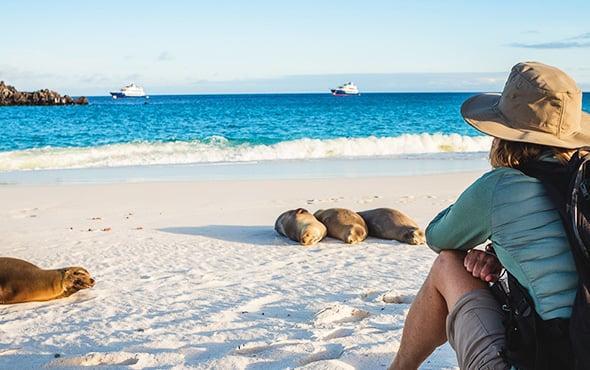
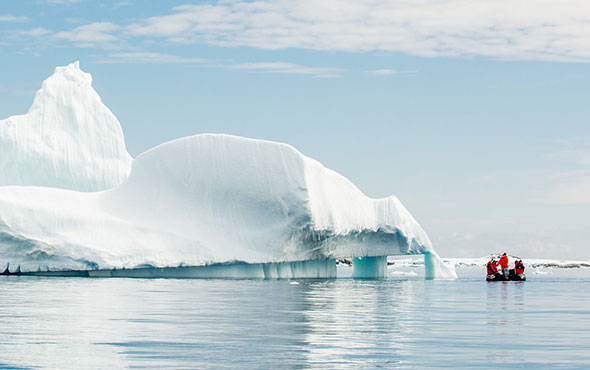
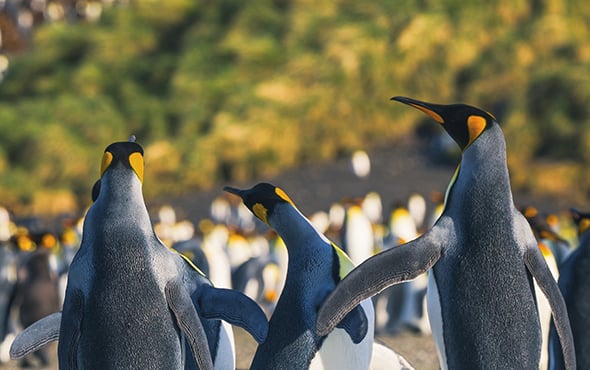

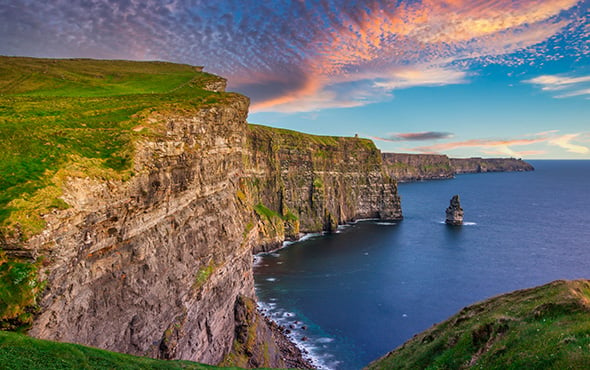
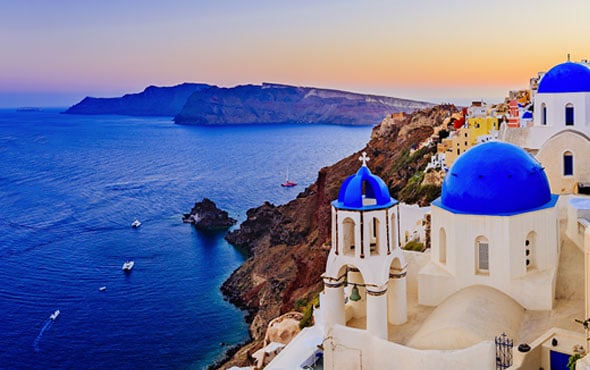


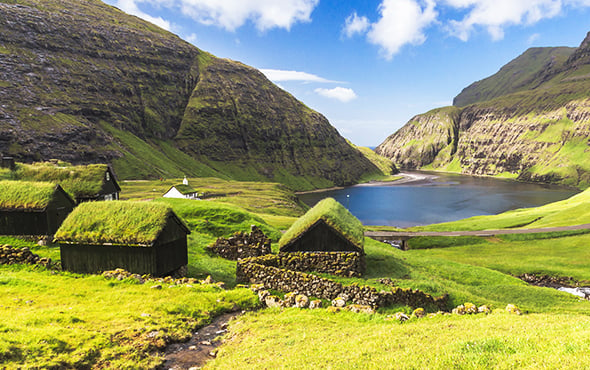
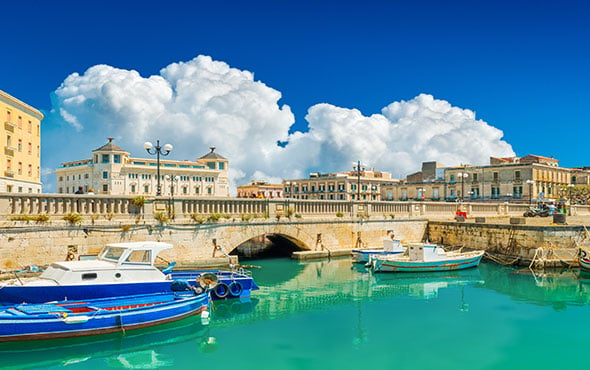


 The Americas
The Americas
 Europe, Middle East and Africa
Europe, Middle East and Africa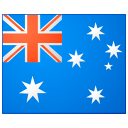 Australia, NZ and Asia
Australia, NZ and Asia